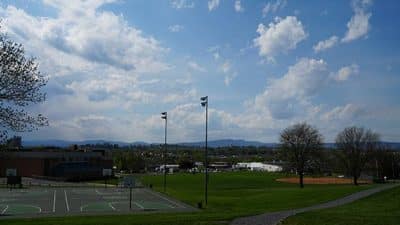
Green waste, consisting of vegetable matter from domestic and industrial kitchens, cuttings, leaves and grass from parks and gardens, are a source of biomass that can be composted. Composting produces organic fertilizer and manufactured topsoil to replenish areas that may have been eroded, thus replenishing soil nutrients and providing nutrition for new growth.
Green waste does not included materials such as dry wood or leaves, straw or hay.
Collection Methods
Many municipalities provide curbside collection of waste in special containers, which are then taken to centres for further sorting and composting. There are also commercial companies that provide these services. Compost is then packaged and sold to organic food producers. Domestically, one can set aside bins or areas to do their own composting. Many communities in the UK have local collection and recycling programmes, which help reduce the amount of food waste that ends up in landfills.
Composting
Composting is a natural way to recycle green waste. It happens in nature all the time. In woods and forests, organic matter falls to the ground and is metabolised by microorganisms and eaten by invertebrates. In the process, microorganisms like bacteria and fungi break down the organic matter and turn it into valuable organic fertiliser, which goes back into the soil to support more plant growth. For the most effective results, certain conditions must exist; temperature and moisture play an important role, as do factors like particle size, the presence of microorganisms and frequent turning. In addition, it is advisable to separate dry wood cuttings from the green material for optimal results.
Approximately 45 – 55% of all waste is composed of organic matter and composting lays a significant role in reducing the amount of waste that ends up in landfills. It is relatively simple to manage and can be carried out in a wide range of scales, both outdoors and indoors in almost any geographic location.
The essential requirements for composting are carbon, oxygen, nitrogen and moisture. Optimum composting converts organic matter into a stable, odour and pathogen free material that is a poor breeding habitat for flies and other pests. Frequent turning aerates the pile and provides oxygen for the microbes. It also helps accelerate the composting process.
Smaller volumes of compost, say in a domestic environment, can be done in well ventilated plastic or metal bins. Metal bins should have the base removed. Larger volumes can be done in rotating drums; enclosures made of pallets lined with chicken wire or even open piles, called “windrows” and covered with plastic or a tarp.
Finished compost is 100% organic fertiliser and will contain primary nutrients, trace minerals and humus. It improves the porosity of the soil, reduces compaction and promotes better drainage, moisture retention and aeration. Nutrients are released over a wide window of time, thereby helping plants tolerate drought conditions.
Sewage Disposal
Green waste can be mixed with sewage and composted. The high temperatures generated in compost piles eliminate pathogens and pollutants present in sewage that may otherwise be harmful to the environment.
Renewable Energy
Green waste, including animal manure, can be placed in sealed digesters to produce biogas. This cellulosic ethanol can be used in the kitchen, for heating and even as fuel for vehicles. The vehicles may require some modification, but in the end they’re no longer burning hydrocarbons and producing carbon dioxide. Another plus is that the fuel is virtually free! Also, at the end of the process, the compost can be used as fertilizer.
Manufactured Topsoil
Green waste in manufactured topsoil allows the nutrients in the materials to be cycled back into the environment. Mixed with industrial waste such as coal dust and fly ash provides bulk and volume and helps revive areas that may have been damaged by extreme weather such as flooding or industrial accidents as happened in Fukushima and Chernobyl. The industrial waste increases artificial topsoil’s water holding capacity and makes use of materials that might otherwise end up in landfills.
Win-Win!
Creative use of green waste is not only environmentally friendly, but also healthier in the long run. It avoids use of artificial fertilizers that may run off into rivers and eventually into the ocean, where it causes a phenomenon known as algal blooms. These blooms choke the ocean and lead to large areas of the ocean being unable to support life due to lack of oxygen.
What’s more, use of compost saves on the large amounts of energy used in the manufacture of fertilizers. Food produced with green waste compost fertilizer typically absorbs less heavy metals that may be present in the soils and is therefore healthier. When all is said and done, green waste provides an opportunity to everyone to do their bit, however relatively small, to save the planet and make it a better place. It’s all win-win!










